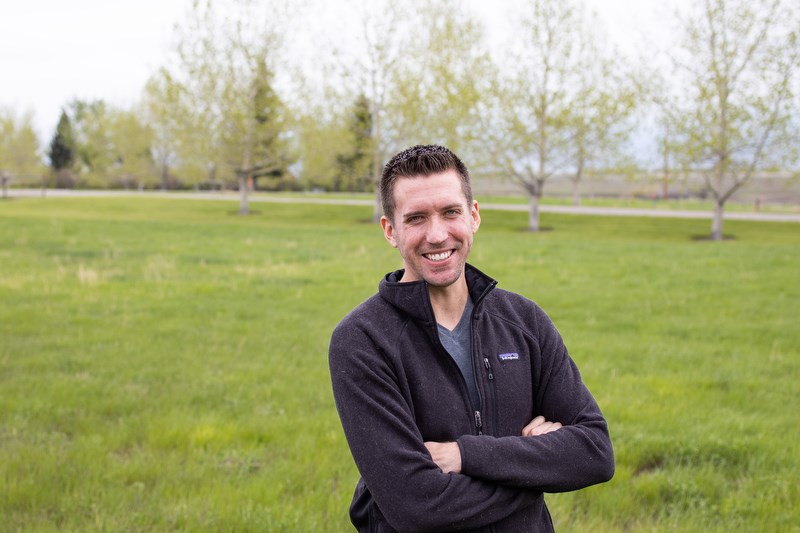A lot of people were thinking small recently —that is, they were planning their own tiny homes.
As part of a Sustainable Living Workshop tour across Canada, more than 20 people gathered May 24-26 just south of Okotoks to learn about living tiny; from construction to furnishings to practical living tips, they left the three-day workshop prepared to enter into their own tiny home venture.
Okotoks resident Cheryl Cousins-Belle, an attendee at the workshop, said she was there as part of her retirement planning.
“I’ve been in my house for 30 years and I’m still house-poor, I still am paying a mortgage,” she said. “Now I want to be in a situation where I don’t have a mortgage, that will allow me to retire on time.”
Cousins-Belle said she would like to see tiny homes as part of a larger community, rather than the current trend of tiny homes being isolated on rural land, similar to that of the Homestead Project that was approved in town council on May 27.
“I’d really like to see an area where we could put our tiny houses and still have infrastructure supporting our existence. The potential to go off grid but still be in an urban setting doesn’t exist right now,” she said. “I would like to have a tiny house where I have a fire station and police surveillance and all the
comforts of home.
“I don’t think this is going to be such an oddity as it is right now in the future.”
Cousins-Belle said she thought alternative living situations, such as tiny home communities, are going to be the wave of the future.
“The millennials that I know don’t want to work full time and spend their lives paying for a house that has a huge carbon footprint, they want to have more respect for the planet,” she said. “It’s a bit of a paradigm shift where you’re not just working for a big house.”
Limiting our environmental footprint was a common theme of discussion at the workshop and living as sustainably as possible was the key message.
“Right now, humans largely exhibit a parasitic relationship with the Earth. We are consuming up resources and we’re not adding anything of value back,” said Kenton Zerbin, who teaches the workshops. “Yeah, to each other we’ve created a magnificent society, there’s no contention there, but our net impact is that we’re losing soils, we’re losing biodiversity and we’re wasting the worlds resources.
“When it comes down to the individual actions we can each take, we make a choice every single day with our homes, and with our food. Where are we getting our food from and how do we house ourselves efficiently and resiliently? And building a small house immediately lowers that impact. Less building materials, less space to heat, less stuff to fill it with.”
A tiny home resident himself just outside of Edmonton, the workshops aim to teach people not only about the different styles of tiny homes but the construction and legalities of owning them, as well as how to make their current homes more sustainable.
“I started my career as a teacher and I started to question the education
system and go ‘are we really preparing kids for life?’” he said. “Once I didn’t have that answer I started looking for something else to teach that people really need to know.”
In the end, he decided to go into sustainable house building, and shortly thereafter, built his own off-grid tiny home, which he and his wife designed and built themselves.
In the two years they’ve been living in their home, their heating bill has been only $260 per year.
“Our overhead is very low so we’re able to work as much as we want really and have a very different life I think most people don’t think is possible,” he said.
One appeal of tiny homes is the cost of building. The average tiny home is between $40,000 and 60,000, according to Zerbin, but can be up to $100,000 if you go with premium building materials and hire contractors.
Sustainable living is comprised of homes, food and community, said Zerbin, so his workshops aim to build community and combine skillsets, such as growing food, landscaping and homebuilding.
Recognizing that not every one wants a tiny house, he runs additional workshops on how to convert an existing home to be more sustainable, efficient and chemical free.
“Most people don’t think of their house like an intensive care patient in a hospital: lines going in, lines going out,” he said. “We can make our houses much more efficient by analyzing those lines in and analyzing them leaving.”
One example was water use, which Zerbin said the majority of which is showers and toilets. He suggested changing the showerhead to an efficient model and putting a brick (in a plastic bag to prevent it from degrading over time) or two in toilet tanks to use less water per flush. This trick can save .14 gallons of water or more per flush, leading to a substantial water savings per year.
Insulating windows can also save money, as windows can be a source of lost heat in winter.
“Sometimes it’s little tips like those where people will have significant savings,” said Zerbin. “Beyond that, there’s always reconstruction and remodeling, reno projects. You can do a lot of changes to your house but you have to be willing to get your hands dirty and do it.”




